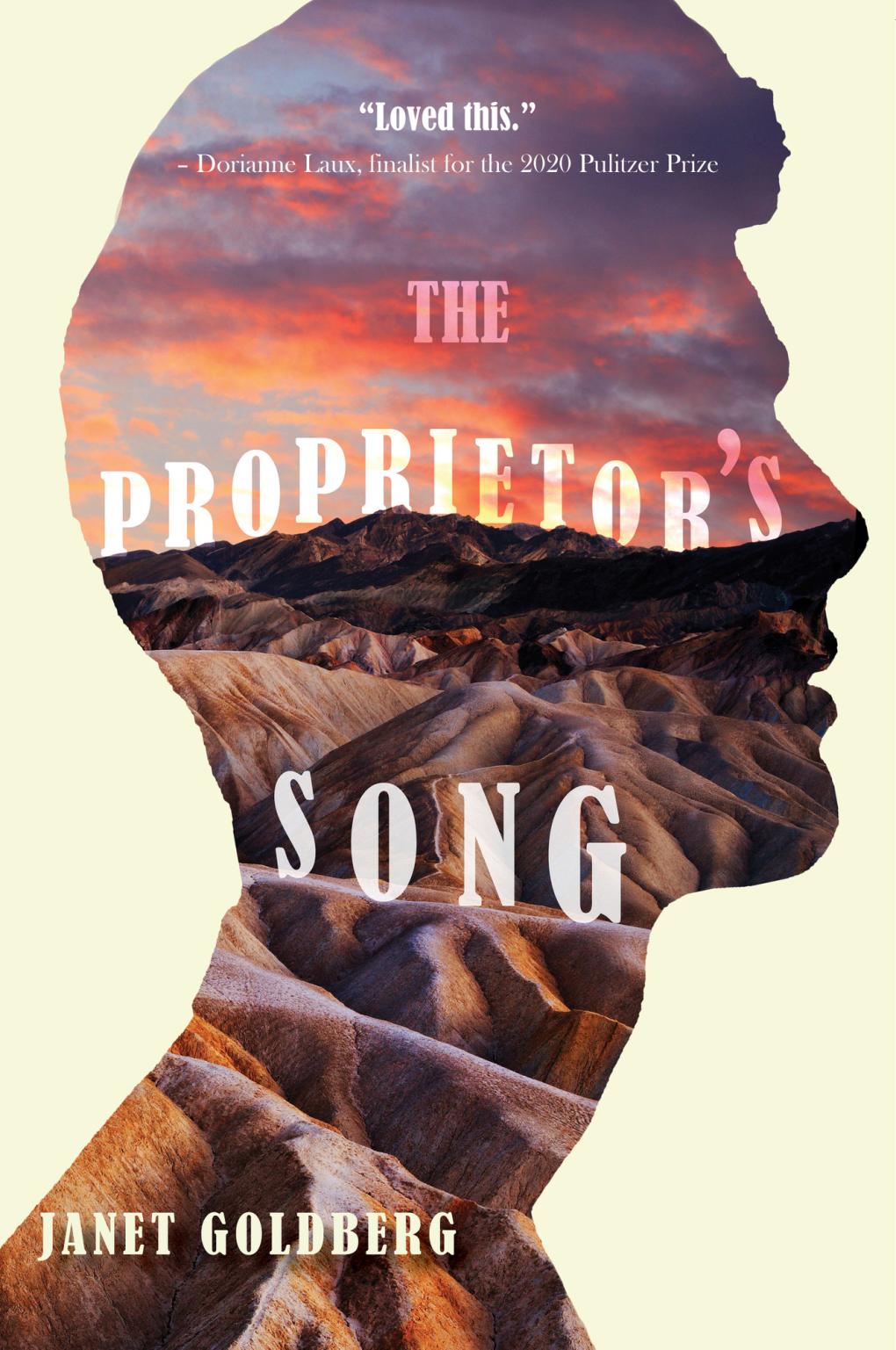Search Results
BART Board Livestream
Live stream meetings will begin below with the Call to Order, which may not begin as scheduled. View past meetings here.
BART Board TV
“BART was a relaxing office that moved”: Berkeley writer wrote her newly published novel on BART
In July, Berkeley-based writer Janet Goldberg published her first novel, “The Proprietor’s Song” (Regal House). The story opens with a description of navigation that propels the tale – and the reader’s mind – into motion.
“From northern California there are various routes to Death Valley,” reads the first sentence. The following paragraphs unravel “one of the more direct, less scenic routes” that carry one toward that storied desertscape.
It’s an engaging start to a novel that follows the winding, intertwining paths of its protagonists, who each set out, in one way or another, to seek those they have lost. And the motif of movement is an appropriate one for “The Proprietor’s Song;” Goldberg wrote nearly the entire novel on BART.

While teaching composition at the City College of San Francisco, Goldberg would routinely take BART from her home station, Rockridge, westward on the Yellow Line to Balboa Park Station. The ride takes just over an hour roundtrip.
Streaming past Berkeley and Oakland, the Transbay Tube and downtown San Francisco, Goldberg would write the novel’s tale on yellow legal pads, filling their pages as the train glided along the tracks.
“BART was a relaxing office that moved,” she said.
Goldberg said she found the smooth motion and the ambient noise of the train on tracks quite comforting and sometimes hypnotic. She compared scribbling on a BART train to writing in a public café or coffee shop, where many writers have famously penned their tomes, from TS Eliot and Fitzgerald to Gertrude Stein and Ginsberg.
“It’s actually hard to talk about,” she said of the train ride’s mesmerizing effect. “There’s something about simply being carried along someplace, and that movement makes the ideas and my hands move.”
While riding the train to Balboa Park for class, Goldberg said it was not uncommon to miss her stop – a family tradition of sorts, she said. Her father, while commuting on the Long Island Railroad to New York City, was known to roll right past his destination station.
“I guess it runs in the family,” Goldberg said.
When she isn’t writing, editing, or grading papers on BART, Goldberg said she spends her rides daydreaming and gazing out the windows.
Goldberg moved to the Bay Area in the 1980s. She has never owned a car.
“The last time I had a car in the driveway was when I lived with my parents in high school,” she said.
While living in San Francisco, Goldberg said she would regularly hop on the first Muni bus to cross her path and ride it wherever it took her. It wasn’t until she moved to Berkeley that she became a BART regular.

Trains soon became her favorite mode of transportation.
“The Proprietor’s Song” was largely inspired by Goldberg’s love of California and the state’s awesome landscapes. She says she often looks at the windows of her BART train “at all the sights, whether they’re lovely or not so lovely; they’re a part of the Bay Area experience, and I never tire of it.”
Goldberg spent about two years developing and editing the novel. She said she largely “free wrote” it spontaneously and had “no idea what was going to happen from one page to the next.”
On the train, Goldberg would scratch out the words, which grew into sentences, then chapters, then a 166-page novel. She initially intended the work to be a short story, but that short story kept “getting longer and longer.”
After drafting the manuscript, Goldberg printed out typed-out sections and brought them on the train to edit longhand with a pen. She’d often look up from her work and notice fellow passengers staring at her.
“If I have a seatmate, whether I’m writing or grading papers, I sometimes see them gazing over and looking at what I’m doing,” she said. “Sometimes they’ll even outright ask, ‘What are you doing?’”
Goldberg said when she revealed she was working on a novel, her fellow passengers became quite excited.
These days, Goldberg no longer commutes to CCSF. Now, she rides BART in the opposite direction of the city, to access a pool in Walnut Creek where she swims laps. She said she strongly believes in the importance of public transportation and would like to see it “bettered and expanded in this country.”
“I want to see local transit thriving,” she said. “I can’t stand dealing with Bay Area traffic and congestion.”
Top 21 BART accomplishments in 2021
2021 was the first full year we spent living in the midst of the pandemic. Despite the challenges, we accomplished many things to help serve the Bay Area. Improvements to the Rider Experience: We returned to near pre-pandemic levels of service and hours Monday through Saturday in August, with a commitment to
A look back at BART’s electric opening day
05.16.22 In celebration of BART’s 50th Anniversary this year, we’re looking back at the transit system’s five decades of service and innovation in a new series of stories. BART celebrates 50 years on Sept. 11, 2022. BART’s Opening Day by the Numbers # of stations open 12 Miles of track open 28 # of trains
BART Plus ticket gets new look
Beginning January 1, 2009, BART Plus tickets will get a new look: We changed the tickets' color from fluorescent green to fluorescent red. As of December 21, 2008, our ticket vending machines in all stations are dispensing Part A of the fluorescent red colored BART Plus ticket for January 2009. BART PLUS
BART labor contracts approved by 2 largest unions
BART labor contracts allow for system reinvestment, efficiencies, and employee benefit cost sharing BART’s four year labor contract agreements, approved by its two largest unions, lay the groundwork for continued reliable service for years to come. The contracts address the growing cost of employee benefits
Take BART to SF Pride Celebration
The 36th Annual San Francisco LGBT Pride Parade and Celebration hits the streets Saturday, June 24 and Sunday, June 25. Join the party all weekend long at San Francisco's Civic Center. SF Pride is two days of music, food and fun?all for free! The celebration area will open Saturday from noon until 6 p.m. and
BART and Muni team up for concert service
BART and San Francisco Municipal Transportation Agency (SFMTA) are teaming up to ensure safe, reliable public transportation tomorrow night between 16 th St. BART Station and Chase Center when Dave Matthews Band fans flock to a concert at the new arena. SFMTA and Chase Center provide free shuttle buses for